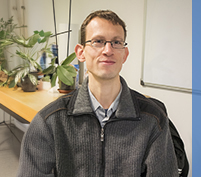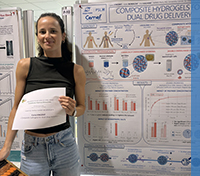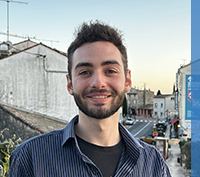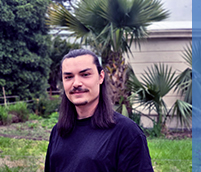PhD defence of Chengdan Xue
8 March 2022
Chengdan Xue defends his PhD in Computational Mechanics and Materials on March 15th, 22
Modeling of grain structure and hot cracking for arc welding processes

Chengdan Xue conducted his PhD work in 2MS team, under the supervision of Charles-André Gandin, Michel Bellet and Gildas Guillemot. Chengdan defends his PhD in Computational Mechanics and Materials on March 15th, 2022 in front of the following jury:
– Prof. Dominique Daloz, Université de Lorraine, Institut Jean Lamour
– MC Iryna Tomashchuk, Université de Bourgogne Franche-Comté, IUT Le Creusot
– Prof. Aude Simar, Université Catholique de Louvain
– Prof. Cyril Bordreuil, Université de Montpellier, LMGC
– IR. Pierre-Emile Lhuillier, EDF R&D
Abstract:
Welding is a permanent assembly process aimed at ensuring the continuity of the material. However, during the solidification stage, several types of defects such as hot cracking develop, leading to a decrease of the weld quality and part performances. Virtual grain microstructure would provide valuable information to enhance literature criterion on defects occurrence and to provide better understanding on their development.
In this work, the 3D Cellular Automaton – Finite Element (CAFE) method is applied to simulate the grain structure formation during Gas Tungsten Arc Welding (GTAW) process with or without added material for metal sheet or chamfer configurations. All simulations are dedicated to austenitic stainless steel welding. The simulated grain structure is compared with experimental observations developed in the present partnership of ANR project NEMESIS. New heat source model is also proposed and dedicated to welding in chamfer configuration. A good coherence is found regarding the grain texture (EBSD map and pole figures) once the corresponding thermal conditions (e.g. melt pool shape) are obtained.
Besides, a strain based hot cracking criterion is computed considering a GTAW process developed upon a metal sheet. Both cracking and non-cracking conditions are investigated regarding some experiments reported in the literature. Results of the welding simulations are coherent with these experimental observations to distinguish cases using criterion. Furthermore, the grain structure simulated by CAFE method is considered thereafter in order to investigate the influence of grain structure on hot cracking. Despite similar results as that without grain structure are obtained, a coherency with experimental observations is found.
Some discussions are thereafter proposed as a perspective for these activities, for example, validation of the WYSO hot cracking criterion with more welding configurations. In addition, the current ultrasonic Non Destructive Testing (NDT) used to detect and localize the hot cracking could also benefit from the reliable simulated grain structure to analyze and improve the NDT software performances.
Keywords: welding, cracking, solidification, multi-scale modelling, microstructure, CAFE approach








